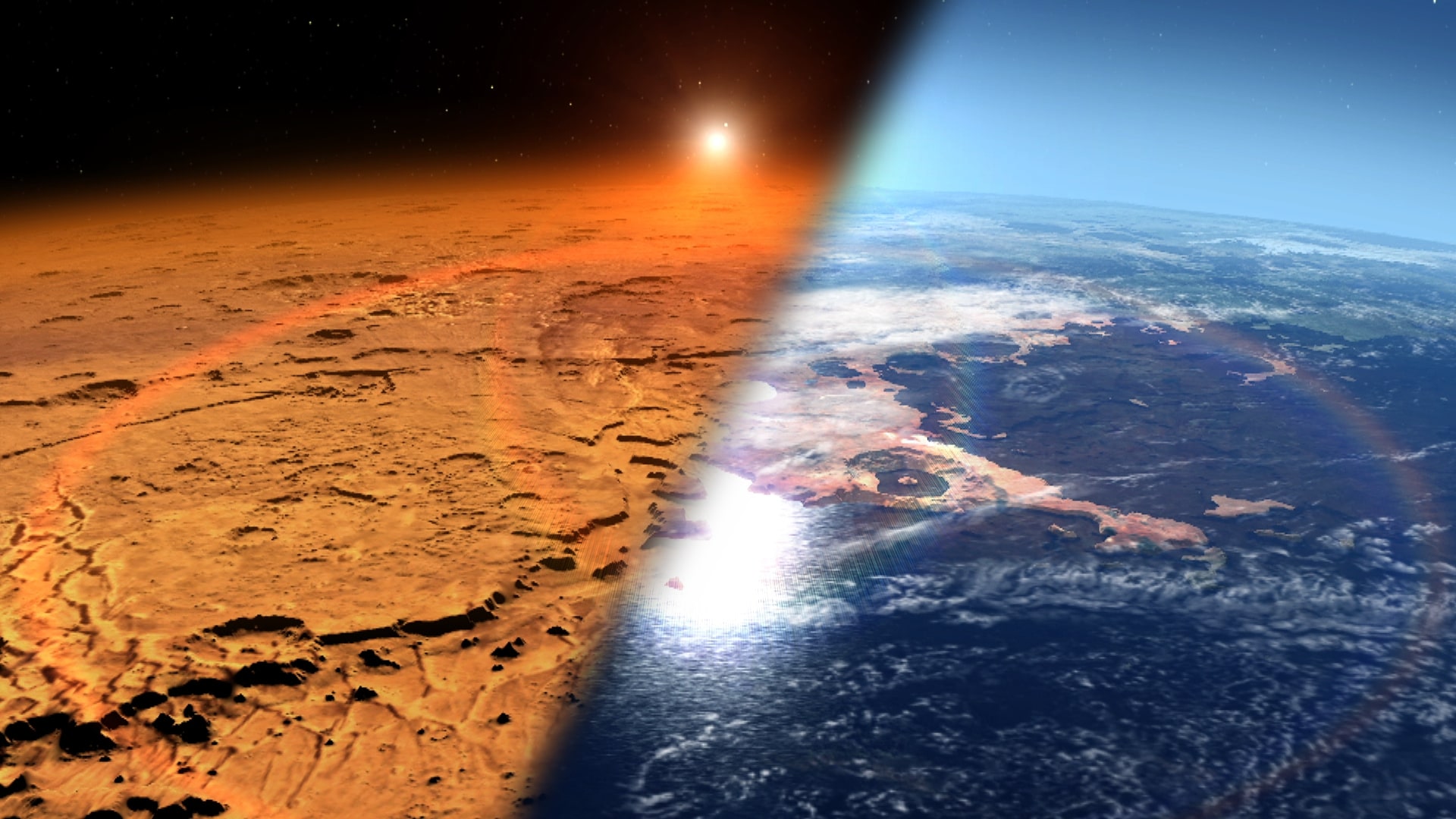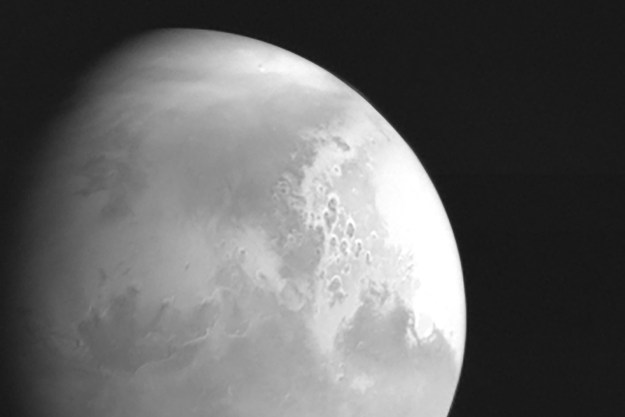
Billions of years ago, Mars could have been a planet very like Earth with copious liquid water on its surface. But over time, that water rose into Mars’s thin atmosphere and evaporated off into space. There are only very small amounts of water vapor left in the atmosphere today, and a new study shows that vapor is being lost even faster than previously believed.
The research, published in the journal Science, used data from the Trace Gas Orbiter in orbit around Mars to see how water moved up and down through the layers of the Martian atmosphere in order to understand how fast it evaporates away. They found that the vapor changes through the seasons and that in the warmer months the atmosphere hosts a whole lot more water than expected, in a state called “supersaturation.”
When the atmosphere becomes supersaturated, this makes the evaporation of water happen even faster. “Unconstrained by saturation, the water vapor globally penetrates through the cloud level, regardless of the dust distribution, facilitating the loss of water to space,” the authors explain. Even when the density of dust or ice particles in the atmosphere changes, that still doesn’t stop supersaturation, so the evaporation of water continues at a brisk pace.
“This implies that the potential for water to escape from Mars is higher than previously thought,” the authors conclude. With water able to escape from the atmosphere faster than we expected, the chances of surface water existing there are looking slimmer.
This could mean that planned manned missions to Mars will be more difficult. Access to water is important not only for drinking, but also for the creation of fuel. Without access to water on the planet’s surface, rockets would have to carry more water along with astronauts and other equipment, which is very heavy and makes launches more difficult.
However, there is evidence that there may be accessible water on Mars — it’s just in the form of ice rather than liquid water. NASA recently produced a “treasure map” of locations where water ice is thought to be easily accessible just beneath the surface of the planet. And there is also ice at the poles and in craters. So don’t despair of creating a Martian colony just yet.
Editors' Recommendations
- How Perseverance is moving faster than any previous Mars rover
- Otherworldly Mars image shows ripples sculpted by dust devils
- See a gorgeous icy crater on Mars captured by the Trace Gas Orbiter
- To find evidence of life on Mars, we should look to its moon Phobos
- Could there be underground lakes on Mars’s southern pole?




